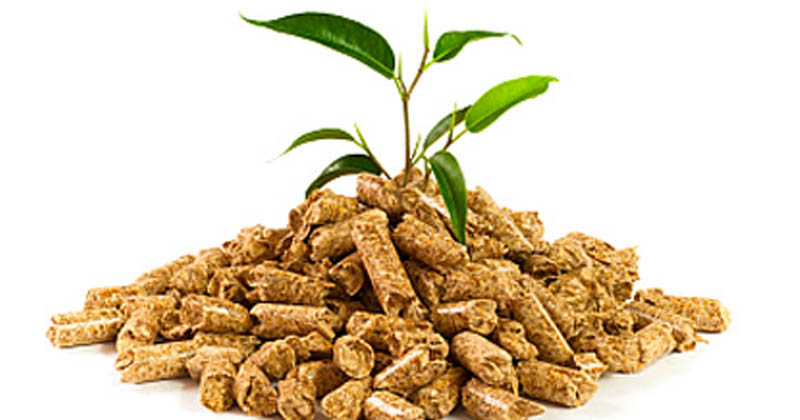
 The quality of the wood pellets is of decisive importance for the efficient operation of a biomass boiler that runs on pellet fuel.
The quality of the wood pellets is of decisive importance for the efficient operation of a biomass boiler that runs on pellet fuel.
Especially in the case of domestic consumers, it is necessary to use only quality certified pellets, both for economic and environmental reasons.
When the wood pellets were first introduced as fuel for the domestic heating in Europe, a number of quality issues quickly emerged. These issues were related both to the behavior of the fuel during its handling (transportation, storage, etc.) and to the combustion properties of.
Important quality criteria, such as e.g. the low content of ash and dust (debris), the high ash melting point etc. are primary fuel characteristics for efficient combustion in the boiler.
For example, a key issue was the durability of the pellets and their dust content. As the bulk pellets are driven by a pneumatic system from the transport trucks to their storage area at high speed, in case of low mechanical strength are crushed and turned into sawdust. Sawdust, however, has completely different combustion properties than pellets and cannot be burned efficiently in pellet boilers. An equally important issue is the ash content of the fuel, as well as the melting behavior of this ash. High ash content, which is often found to be associated with a lower ash melting temperature, led to boiler failure as the molten ash was deposited in various parts of the boiler preventing the smooth combustion of the pellets. At the same time, it was shown that high ash leads to the emission of increased pollutants, which creates environmental and licensing/legal issues in the operation of the boiler. Also the origin of the pellet is decisive. In case the raw material is non-clean wood (e.g. chemically treated, painted, etc.) it is not only more likely to lead to malfunctions of the heating system, but also to increased emissions of atmospheric pollutants, consequently the cessation of operation of the law. To eliminate this phenomenon, pellet quality standards include the measurement of a list of chemical elements that are indicative of contamination such as nitrogen, sulfur and heavy metals. According to the specifications of the new ENplus A1 standard, wood pellets must contain a maximum of 1% in powder. Of course, during the bulk feeding of the material into a storage tank/silo, the development of some dust is difficult to avoid, but it can be significantly reduced, depending on the quality of the fuel.
The new European standard for solid biomass fuels entered into force in 2011. The standard in question, a continuation of the general standard ΕΝ14961-1, is the EN14961-2 “Solid biofuels – specification of fuels and classes – Part 2: Wood pellets for non-industrial use”. The new European wood pellet quality standard is implemented in Europe by ENplus, which requires the most stringent quality standards. OR ENplus certification it not only sets quality standards for the pellet product, but also for its trade. A key advantage for a consumer to choose ENplus wood pellet quality is the certainty that he is getting a certified quality product, consequently making efficient, economical and ecological combustion in his boiler or stove. It is noted that the European Standard ΕΝ14961-2 is in the process of being converted into global standard from the ISO Organization.
The EN 14961-2 standard includes the quality categories A1 and A2 which can be characterized with the term ENplus. Class A1 is the highest quality wood pellets that can be used in domestic boilers and pellet stoves. Category A2 is used in higher power installations, while it is also a fuel with a higher ash content. The pellets for industrial applications are certified through category B and are not called ENplus.
For domestic heating in private households, it is recommended to use only ΕΝplus certified wood pellets of class A1. Class A2 pellets are used in boiler applications of increased power (above 100 kW) and differ from class A1 in terms of ash content and ash melting behavior (which is a required measurement for the ENplus standard, but not for EN) . Also, the range of basic raw materials for the production of these pellets is wider than for the ENplus A1 category. In any case, boiler manufacturers must also allow the use of class A2 pellets in their boilers.
The following table summarizes the quality characteristics of the various categories of wood pellets according to the EN 14961-2 standard.
Categories & Characteristics of Wood Pellet Quality according to EN 14961-2 standard | ||||
Quality Parameter | Units | Category ENPlus-A1 | Category ENPlus-A2 | Category EN-B |
Diameter | mm | 6 or 8 +/- 1 | 6 or 8 +/- 1 | 6 or 8 +/- 1 |
Length | mm | 3.15 – 40 | 3.15 – 40 | 3.15 – 40 |
Density (bulk) | kg/m3 | >600 | >600 | >600 |
Calorific value | MJ/kg | 16.5 – 19 | 16.5 – 19 | 16.5 – 19 |
Moisture | % | <10 | <10 | <10 |
Durability | % | >97.5 | >97.5 | >97.5 |
Ashes | % | <0.7 | <1.5 | <3 |
Ash Melting Point | °C | >1200 | >1100 | >1100 |
Source Material (raw material) |
|
|
| |
Source: biomass energy
buy pellets, Trikala price, Serres pellets, prosfora pellet price good quality, pellets Boeotia, Corinth, Ioannina pellets.